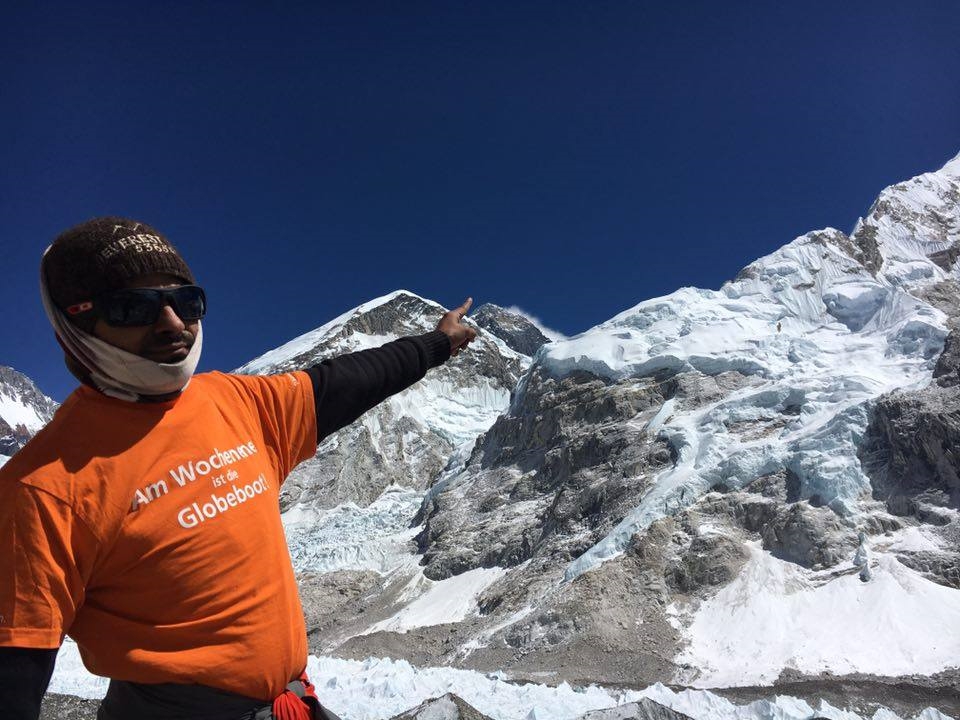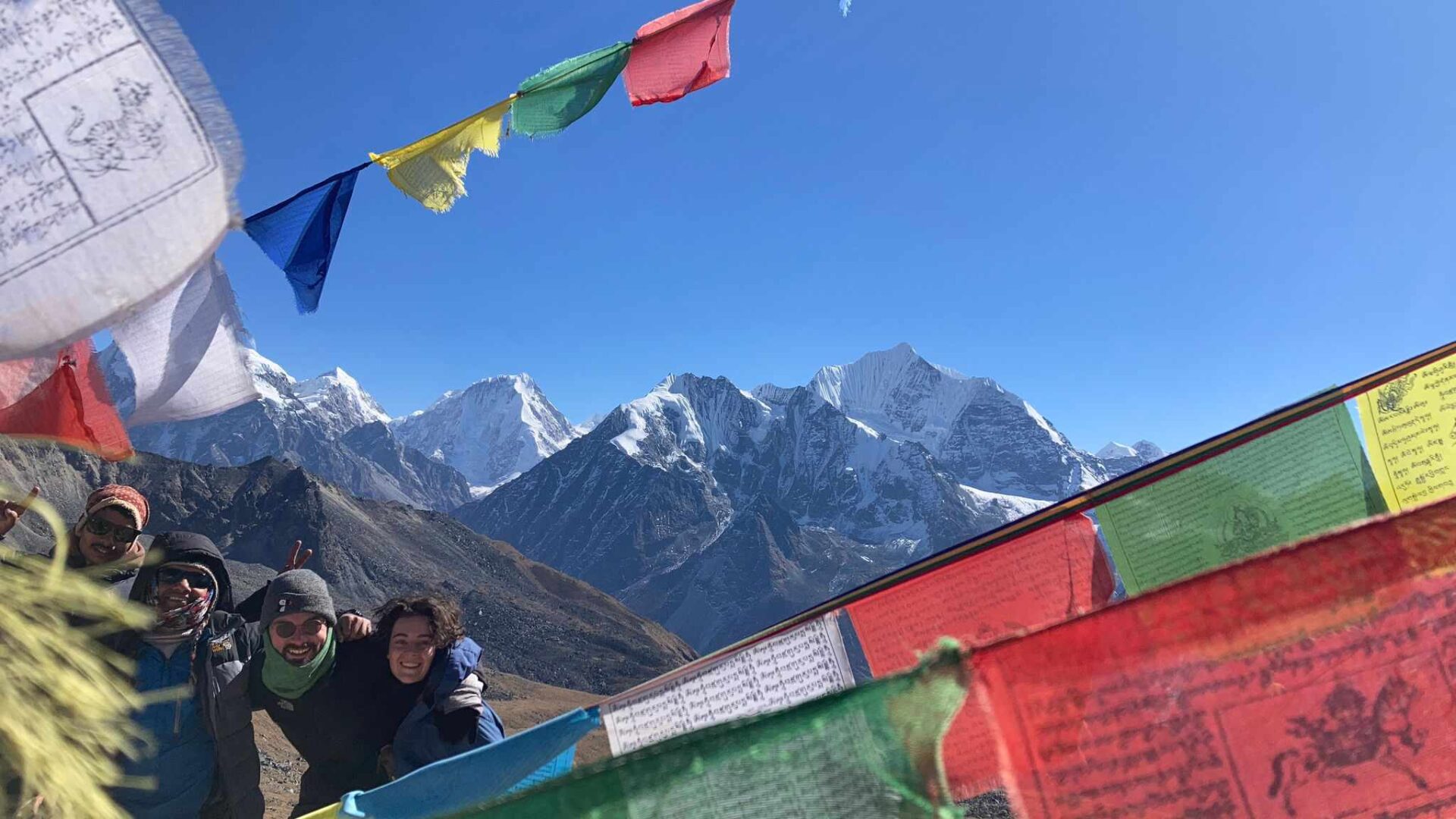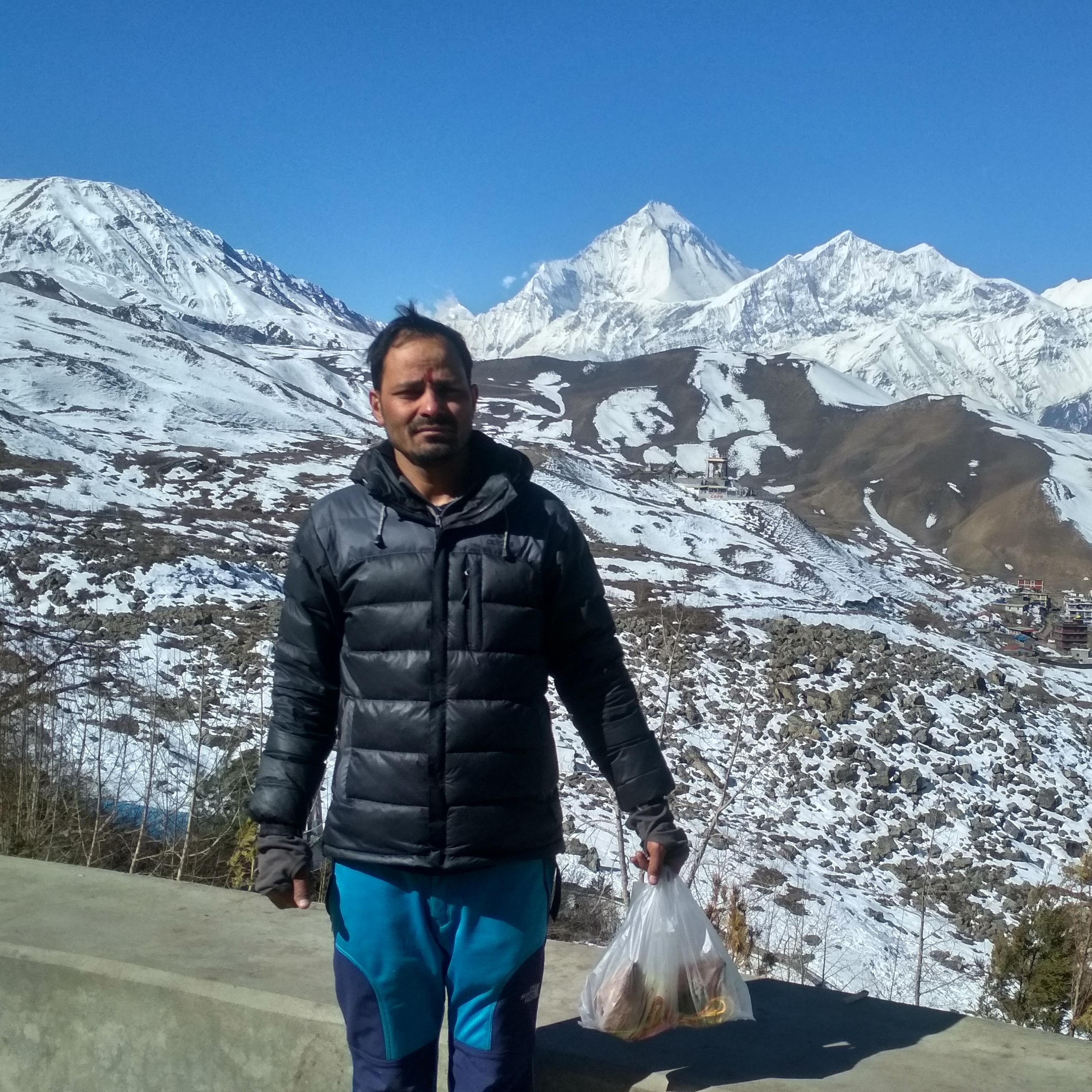Short Annapurna Circuit Trek
Short Annapurna Circuit Trek Highlights
- 5416 m Thorong La Pass.
- The sacred site of pilgrimage is Muktinath.
- George is the deepest Kali Gandaki River.
- An undiscovered gem in the Annapurna Massif.
- A large range of climate zones, from the Tropics to the Arctic.
- See gompas, monasteries, and temples.
- There is a Tibetan village at the high foothills and a Hindu village at the lower foothills.
- Take note of the tall foothills that abut Tibet's highest plateau.
Short Annapurna Circuit Trek is arguably one of the most well-known, admired, or talked about treks in the world. It provides breathtaking views of the mountains and provides opportunities to see a typical Nepali village, the locals, and their way of life in the Himalayas. The route of the Annapurna circuit trek passes through picturesque villages of Magar and Gurung, dense forests of alpine and bamboo, lush rhododendron, and beautiful scenery before arriving at the trip’s last and ultimate destination, Thorong La pass (5416 m).
The 230 km Annapurna circuit trek is covered. We reach the highest point at Thorung La pass, which touches the Tibetan Plateau, where we can enjoy breathtaking views of the Himalayas, including Annapurna (8091 m), Dhaulagiri (8167 m), and Manaslu (8153 m). This is a short 4-to 5-day hike from Chame to Jomsom in the highest Annapurna region.
Best time to visit
All seasons are equally suitable for Annapurna circuit trekking, but the spring season of March to May when days are longer with much sunlight hours from early 6am to till ate 6pm which helps to cover much more distance each day to designated overnight stops. Annapurna circuit trekking offers you to explore incredible wild flowers in season especially rhododendron plants (known as Azalea), the view of colorful hills, fresh and pleasant environment.
People and Culture
People from various cultures coexisted peacefully in Nepal, a multiethnic nation. Thus, the majority of the Gurung and Magar people—known for their Gurkha regiment—live in this area. In addition, mongoloid Himalayan people can be seen in the Himalayas, and in lower elevations, Chhetris. However, since so many people hike there each year, there’s no denying that the Annapurna circuit trek offers the best scenery.
Permits required for Annapurna circuit trek
Put simply, the Annapurna Circuit Trek falls under the Annapurna Conservation Area Project (ACAP), and the entire range known as the Himalayas in Nepal is a protected area. Every hiker heading up Annapurna requires two separate permits.
- Permits for the Annapurna Conservation Area Project (ACAP).
- Permits for the Trekkers Information Management System (TIMS).
Altitude Sickness
Altitude sickness typically happens when you ascend to a high altitude too quickly. At high altitudes, your body tries to adapt to the lower oxygen levels and lower air pressure, which can cause symptoms like fatigue, headaches, and nausea. Here are a few strategies to help you avoid experiencing altitude sickness.
- Take a break and relax where you are.
- Do not increase the elevation for at least 48 to 72 hours.
- Ensure that you are consuming adequate water. Don’t exercise, consume alcohol, or smoke.
- Eating and drinking a diet high in carbohydrates, such as bread, pasta, fruits, milk, rice, and so on.
Travel Insurance
It is necessary to have travel insurance for any trek in Nepal, including the Annapurna circuit. Make sure your travel insurance covers unexpected emergencies and trekking at high altitudes when you purchase it. Furthermore, coverage of other activities such as hiking, mountaineering, and adventure sports can be obtained. It can provide you with financial security and comfort in the event of an unplanned mishap.
Guide and Porter
It is mandatory for all hikers to hire a certified trekking guide and obtain a TIMS card from approved trekking agencies that are registered with the Nepalese government. Crucially, Nepal Holiday Treks and Tours Pvt. Ltd. is a trustworthy business that can offer you a porter and guide who is both technically sound and safe. They always have the necessary supplies, first aid kits, and safety equipment on hand.
Foods and Accommodations
A staple dish of Nepali cuisine is Dal Bhat, a curry made with organic, healthful fresh green vegetables. Meals are served at tea shops and lodges; they are typically a combination of western and Nepalese cuisine. Vegetarian options are also available. Throughout the hike, you will savor a wide variety of delectable foods.
The lodging is simple, usually consisting of a shared room with twin beds. Some tea houses may have common areas where you can relax and chat with other hikers.
Short Annapurna Circuit Trek Itinerary
Drive from Kathmandu to Chame (279 km, 11-12 hr drive)
Trek from Chame to Pisang (13.7 km / 8.5 miles, 6-7 hr walk)
Trek from Pisang to Manang via Ngawal (20 km / 12.5 miles, 8-9 hr walk)
Acclimatization day in Manang / Hike to 100 Lama Cave or Gangapurna Lake
Trek from Manang to Tilicho Base Camp (10.7 km / 6.6 miles, 8-9 hr walk)
Hike from Tilicho base camp to Tilicho Lake and Trek down to Yak Kharka (10 km / 6 miles, 9-10 hr walk)
Trek from Yak Kharka to Thorong Phedi/High Camp (6.5 km / 4 miles, 6-7 hr walk)
Trek from Thorong Phedi to Muktinath via Thorong-la Pass (5416m) (16.4 km / 10.1 miles, 11-12 hr walk)
Trek from Muktinath to Jomsom (20.2 km / 12.5 miles, 7-8 hr walk)
Drive to Pokhara or Kathmandu
Short Annapurna Circuit Trek Inclusions
What's included
- Local bus From Kathmandu to Besishar then sharing jeep to Chame
- Drive to Pokhara or / Kathmandu by local Bus from Jomsom
- Trekking permits and TIMS card
- Three meals a day- Breakfast, Lunch, Dinner and 3 cup of tea or coffee a day during the Trek
- Accommodation in teahouse/ lodge during the Trek
- A highly Experience, helpful, knowledgeable, friendly, English speaking well trained, government license holder Guide with all his salary, food, Drinks, accommodation, equipment, transport, and insurance
- Strong, helpful, porters with proper safety equipment and walking equipment his salary, food, drinks, accommodation, transport & insurance, (one porter for two people & he will carry bag pack max 20-25kg)
- Fresh fruits during the Trek
- Arrangement of Emergency helicopter service (paid by your travel insurance company).
- All Government taxes and company service charge
- Medical support kit box
Add-ons
What's not included
- International airfare and visa fees
- Lunch and dinner in Kathmandu
- Personal expenses of bar and beverage bills, wifi, hot shower, bottle of water, extra porters, laundry or any other things which are not mentioned by the company
- Your trekking gears and extra nights in a certain destination
- Your travel insurance which should include the emergency rescue
- Tips for your guide and porters
- Entrance fees during the sightseeing
- Extra expenses due to any event such as strikes, weather conditions, or flight delays
Short Annapurna Circuit Trek FAQs
How long is Annapurna Circuit Trek?
The Annapurna Circuit is typically 260 kilometers long. However, the exact distance may vary based on the route you take and the points at which you begin and finish your hike. Similarly, the time it takes to finish the circuit could range from 10 to 21 days, depending on the itinerary you select.
How difficult is the Annapurna Trek?
We now know that the Annapurna region offers a variety of trekking routes, including both easy and challenging trails. As such, the Annapurna Circuit Trek is considered a moderate difficulty trek by seasoned hikers.
Walking, climbing, and descending at an elevation of more than 3500 meters above sea level are all part of this long side trip. This does not preclude a novice from enrolling in this adventure. Even if you have never hiked before, you can still finish it, but some level of fitness is undoubtedly necessary.
When is the Best time to do the Annapurna Trek?
For the Annapurna trek, autumn, or the months of September and October, are ideal. The daytime highs of 15–17 degrees Celsius and the evening low of 5 degrees Celsius are both agreeable. The Annapurna Circuit is also best visited in early November when the days are still bright and beautiful. Even though the nights won't be as warm as they were in the preceding months, your teahouses will keep you toasty.
Additionally, springtime, which runs from March through the beginning of June, is regarded as the trek's peak season. Even at this high altitude, as spring advances, the days grow longer and hotter and the nights get shorter and warmer. Even so, it will be bearable to be windy and chilly at night and in the morning. In the higher and lower regions of the region, the average daytime temperature ranges from 5 to 20 degrees Celsius, respectively.
Winter and monsoon seasons should be avoided, according to Nepal Holiday Treks & Tours, as the former brings temperatures below freezing and the latter is extremely risky due to landslides.
What are the Accommodation facilities During the Annapurna Trek?
The Annapurna region is peppered with tea houses and lodges. The Annapurna Circuit is actually considered a tea house trek. This implies that in the majority of the villages, visitors can find lodging in tea houses or lodges.
It is best to understand that tea houses in this area essentially refer to simple lodgings with warm beds, blankets, pillows, and bed linens. The boarders are expected to share the bathrooms, which are typically found outside the main building.
While there is basic bedding available, Nepal Holiday Treks and Tours recommends bringing a sleeping bag because the nights can get very cold.
Are food and water easily available Throughout the Annapurna Trek?
Nearly all of the tea houses in the area have a decent food menu.
Cooks are prepared to prepare simple meals that range from regional to occasionally western fare. The most well-known is the Nepali staple Dal Bhat, which is literally translated as rice and lentil soup served with seasonal vegetables. If you'd like, you can bring along dry fruits, biscuits, chocolates, and other snacks.
Tea shops sell packaged drinking water, but they cost a lot of money. Packaged bottles composed of plastic are prohibited in certain areas, though, as they are considered plastic-free zones. It is recommended by Himalayan Trekkers that you bring a water bottle of your own. The spring water that will be filtered with purification tablets or boiling water from the lodges can be put into the bottles.




